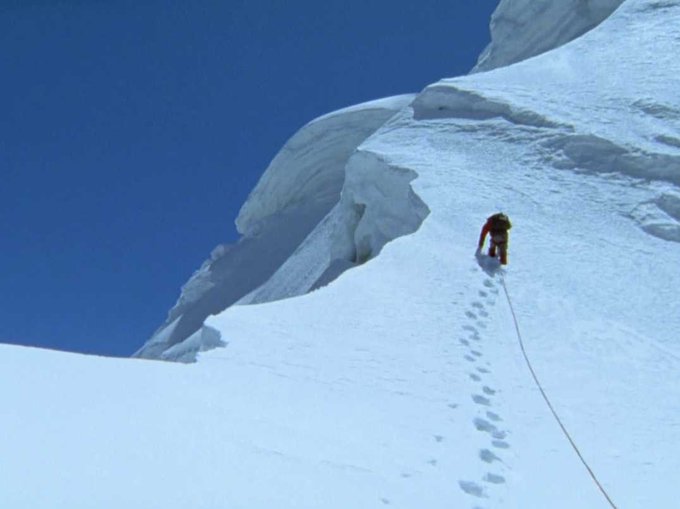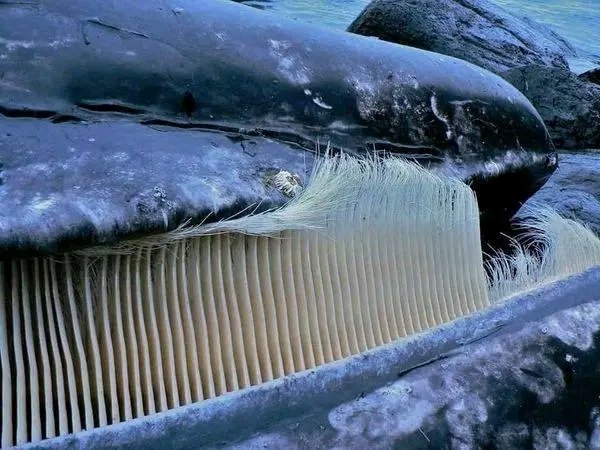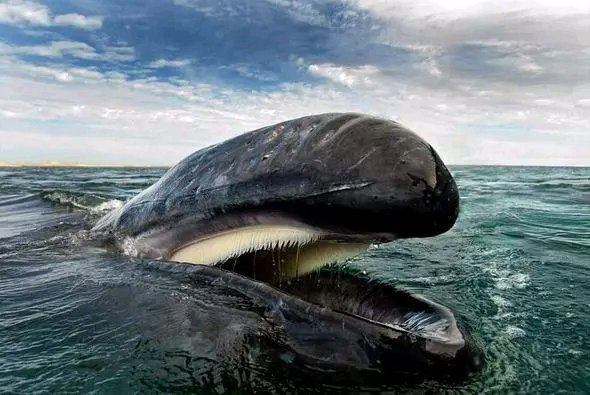There are some things that humans just weren’t built to survive such as driving your car off a cliff, being swallowed by a whale or falling into a deadly dam.
Freak accidents happen all the time, yet there are some people among us who manage to beat the odds and live to tell the tale. Let's explore some of the luckiest people who survived the impossible.
Margaret Gwyer
Margaret Gwyer was a British national from the city of Saskatoon in Saskatchewan, Canada. She was just 26 years old when she married Reverend Herbert Gwyer on 15th April 1915. Less than a month later the pair boarded the RMS Lusitania in New York, bound for Liverpool.

But little did she know, Margaret was about to star in one of the most bizarre survival stories of all time. On May 7th just 6 days after leaving the port the grand ocean liner was torpedoed by a German submarine while Margaret and Herbert were at dinner. Not long after the impact, the lights went out and mass panic set in as the boat began listing badly to starboard.Herbert escorted Margaret to a lifeboat and helped her in along with three other women and a baby. But what Herbert didn’t realize was that, as Margaret looked up she thought the ships smokestacks were going to fall on the lifeboat and quickly clambered back on deck! Meanwhile, Herbert hopped into another boat and began to row away. But when the deck Margaret was standing on slipped beneath the water, she desperately tried to swim away from the quickly sinking ship. Unfortunately, she didn’t make it very far until she was sucked into a violent whirlpool and down into the funnel of one of the smokestacks along with two other men.That should have spelled the end for Margaret, but lady luck had other ideas. By some miracle, an explosion in the boiler room directly below the smokestack blew Margaret right out of the funnel and back to the surface!

Margaret was rescued by a nearby lifeboat, and quickly spotted her husband, who was sobbing over her loss on another boat nearby.At first, he didn’t even recognize Margaret because she was so covered in soot. When the pair were reunited at last, Margaret composed herself and said: “never mind, we’ve lost those awful wedding presents!”. She must’ve been some woman to still have a sense of humor after being fired out of a sinking ship!
Beck Weathers
Climbing mount Everest is a notoriously tricky feat. Thousands of successful mountaineers have reached its towering peak of 29,029 feet but more than 300 others have lost their lives while trying. Even when using bottled oxygen, mountaineers can experience fatigue, nausea, vomiting and other problems like hypothermia and frostbite during the climb.
But in 1996, 49 year old Beck Weathers a pathologist from Texas armed with all the confidence of a mid life crisis decided he would take on the challenge. On May 10th, he and his team were due to summit the mountain when Weathers started losing his vision at around 28,000 feet.He had undergone a corneal operation not long before attempting the climb, and the high altitude had rendered him half blind. The guide decided to continue the groups ascent, promising to come back for Weathers on the way down. Although passing climbers offered to help him back, Weathers refused and decided to wait.
Shockingly, that area is grimly known as the "Death Zone" because it’s littered with the frozen, mummified bodies of other failed climbers. After some time, the wind picked up and a dangerous blizzard rolled in, dropping the temperatures to an unfathomable 90 degrees below zero! Weathers then decided to begin the climb back alone but got bogged down in the storm.
By the time help arrived, it was too late. He was deranged with hypothermia and lack of oxygen, and his right arm was frozen solid. At that point, the guide made the difficult decision to leave Weathers behind. The next day, doctors came to examine him. They chipped ice from his face and broke the news that he was just another casualty of the infamous “Death Zone”.But in a Hollywood style twist, he later awoke from his coma. Finding himself covered in snow, he stood up and walked back in the direction of camp. When he arrived, it’s safe to assume the other climbers probably mistook him for one of the White Walkers from Game of Thrones!Weathers was airlifted and taken to Kathmandu, where he lost his right arm from the elbow down as well as his nose. Despite his ordeal,
Weathers recovered fully and went on to become a motivational speaker! Hopefully, he also went on to take on a far less deadly hobby than mountain climbing.
Joe Simpson
That tale of two British climbers sounds like the stuff of folklore, so it’s no surprise it was turned into a best selling book, a documentary and a U.K. theatre show titled “Touching the Void”.
In spring 1985, 25 year old Joe Simpson and 21 year old Simon Yates became the first people to scale the West Face of the Siula Grande mountain in the Peruvian Andes, which is almost 21,000 feet high! But what should’ve been a moment of total celebration quickly turned to one of terror and very nearly tragedy. While the pair were making their descent, Simpson plunged down an ice cliff, breaking his right leg. As night fell, and with a storm rapidly closing in, the two men were forced to continue in the dark, with no way of communicating and almost 150 feet of rope separating them.While battling blizzards, avalanches and frostbite, Yates chose to try and lower Simpson down the mountain by rope 300 agonizing feet at a time. He had already lowered him some 3000 feet over an icy precipice when the snow seat he was using for leverage started to collapse.

Suddenly, Yates was faced with an impossible decision. He couldn’t see or hear Simpson, but he knew they were both as good as dead if he continued to hold on. So, Yates took a knife and cut the rope, sending his climbing companion plunging to an early grave or so he thought.
But, Simpson had already fallen 100 feet into a cavern of snow and ice below. He was sure he was done for, but he somehow managed to muster the strength to crawl an immense journey of six miles to make his way back to base camp. Three days later, Simpson arrived just in time to be reunited with Yates, who was just packing up to leave.
Even more remarkably, Simpson showed no bitterness toward Yates, and has even said in the years since that he is sure he would have made the same decision if the roles were reversed.
Angela Hernandez
Our next story sounds like one of those nightmares you have when your body jolts you awake with full fledged terror. It all started on July 6th, 2018, when Angela Hernandez was driving her white 2011 Jeep through the Big Sur area on her way to Southern California. Suddenly, Hernandez spotted a small animal in the road ahead, and swerved to miss it.
But that act of compassion would cost her big time. Hernandez’ car veered off the edge of a cliff, plummeting 200ft below to where the ocean meets a rocky beach that is completely isolated from the road above.
When Angela next opened her eyes, she was still inside her car and she could feel water rising over her knees. Although every bone in her body hurt, she was able to remove her seatbelt and use a multi tool she kept by her seat to smash the drivers side window. Then, she jumped into the water and swam until she reached the shore, where she blacked out again.
When she next woke up, it was still daylight. As she surveyed her surroundings, Hernandez saw nothing but rocks, the ocean, the sheer cliff above her and her car now half washed up on the shore with the roof ripped off. She had no shoes, and her jeans were ripped to shreds.
As her grim reality became apparent, Hernandez scoured the shore sunburned, dehydrated and screaming for help, but no one on the road could hear her. Up above, the authorities were searching for Hernandez, who had been reported missing while travelling from Oregon to California. But it would be seven whole days until her ordeal was over.During that time, Hernandez used a hose from her car to catch water dripping from moss on rocks. So, when Chad and Chelsea Moore spotted a discarded car bumper and followed the trail of debris to find the rest of the wrecked vehicle, they knew something was up.When the couple walked up the beach,
they found Hernandez hidden in the rocks and called for help. She suffered a brain hemorrhage, four fractured ribs and a fractured collarbone, a collapsed lung and ruptured blood vessels in both eyes among other injuries. But above all else she was grateful to be a lucky survivor!
Jeanna Giese
Freak accidents aren’t the only things humans are able to overcome with remarkable luck. Just like Jeanna Giese! When she was 15 years old, Giese was attending Sunday mass at her local church in Fond du Lac, Wisconsin when a bat started flying around inside.
After an usher stunned it by hitting it with a prayer book, Jenna being an animal lover picked it up by its wings and carried it outside. And that’s when it sank its fangs into her left finger. Naturally, people have survived bites from far more fearsome creatures but that wasn’t just any old bat, it was a rabid bat.

For those who don’t know, rabies is a nasty viral disease carried by certain animals which can kill a human by compromising the brain’s ability to regulate breathing, salivation and heartbeat. The disease is virtually 100% fatal. Thankfully, there’s a vaccine which can be administered to stimulate antibodies to the virus.The vaccine eliminates the chances of getting the disease if it is given in advance or more commonly, within a few days after the initial exposure. There was only one small problem: Giese didn’t get the vaccine. The bite was so quick and small that she thought she had only been scratched. Plus, her fellow churchgoers told her only healthy bats could fly, meaning she thought she was safe when it flew away!

But three weeks later, Jenna noticed that her finger felt a bit numb and tingly. Within a couple of days, she felt tired and nauseous. 24 hours later she was seeing double and was taken to hospital, where she arrived semi-delirious and vomiting. Her parents were told she had hours to live after all, no one had ever survived rabies without a vaccine before.Left with no other choice, Dr. Rodney Willoughby came up with a totally impromptu treatment. He put Giese into an induced coma to give her immune system time to build up antibodies against the virus. A week later she was slowly brought out of the coma and remained in hospital for a further 11 weeks, during which time she took 17 pills a day to help her recovery!Full rehabilitation took months to a year, but doctors have since described
Giese’s survival as “historic”. In the years since, Giese has been outspoken about her battle and hopes that doctors can refine the experimental treatment to ensure that other victims are given the same chances of survival.
Whale Almost Swallows Two Kayakers
On Monday 2nd November 2020, friends Liz Cottrel and Julie McSorley were kayaking at California’s Avia Beach when the unthinkable happened. The pair had been watching whales feed on silverish from a distance of about 9 meters when a large pool of fish emerged around them. McSorley then spotted a large, dark shape coming up from beneath but it was too late to react before this happened. Check out the footage below:
Kayakers nearly swallowed by humpback whale in California by Guardian News
It’s like watching a real life Moby Dick! Except this time thankfully there’s far less tragedy involved. It may look like
Liz Cottrel and Julie McSorley were swallowed by that huge humpback whale, but both women actually escaped totally unharmed.As the whale burst out of the water, it lifted the pair and their kayak up into the air before dumping them back down. It’s incredible that a nearby kayaker was able to record the entire thing on camera, but what’s even more amazing is that McSorley also happened to be filming at the time and caught it from her own perspective.
Thankfully, most whales with the exception of the sperm whale have throats that are too small to swallow a large mammal the size of a human, and there’s no records of such a thing ever happening.Assuming you were swallowed in one piece, the whale wouldn’t be able to tear you to pieces because whales don’t have "teeth" so to speak. Instead, they have "baleen plates" which are covered with hair that is able to filter krill from the thousands of liters of water those huge creatures swallow in one gulp. The biggest danger would either arise from being squashed by the whale’s sheer weight or being dragged down fast enough to a depth where your lungs experience a "thoracic squeeze" and collapse completely. Thankfully, those ladies only lost their car keys and not their lives.
Lisa Mondy
According to the International Wildlife Museum the odds of being attacked and killed by a shark are around 1 in 1.75 million! Those chances are lower than the possibility of dying by a lightning strike, a freak firework accident or excessive cold. But not everyone is safe, like Lisa Mondy!
In March 2011, 24 year old Lisa was a wildlife tour guide making the most of a sunny lunch break by wakeboarding with friends when she failed to land a jump and the board came off her feet. Lisa started treading water as she waited for the boat to turn around and pick her up when a great white shark sped straight up at her from below! The creature hit her so hard it launched her about 3 feet out of the water as its powerful jaws closed around her head and arm. The shark dragged Lisa underwater but lost its grip of her, and thanks to her life jacket she was able to come back up to the surface.
Lisa was then rushed to hospital in Port Stephens, where doctors feared they would have to amputate her left arm because she had lost so much muscle, as well as her brachial artery, which is a major blood vessel. Miraculously after undergoing numerous operations she was able to leave hospital with her arm heavily bandaged up, but crucially still attached to her body!Even more remarkably,
Lisa returned to the water in February 2016 to get a closer look at the predator that almost killed her by going cage diving! And she also smashed a performance of “Strong” by British band London Grammar on X Factor Australia in 2015.
Lisa Mondy Strong by Tiny Tom
Ron Cooper’s Lucky Escape
Regardless of how much of an experienced driver you are, the open road is full of pitfalls and perils. And if it isn’t other drivers you need to be wary of, it’s your natural surroundings. In 2014, Australian motorist Ron Cooper proved that sometimes all it takes is lightning fast reaction times to save your own life.
While traveling on the Black Spur highway near Melbourne, Australia, Cooper was caught in the middle of a wild storm. Dash cam footage shows the trees that line the road swaying slightly as Cooper turns a corner and leaves and small branches litter the road ahead. And you can see what happens in the clip below:
The Black Spur Wind storm Tree Fall, Victoria, Australia by Ron Cooper As if blown over by some invisible giant, at least seven trees fall like a house of cards right in front of Coopers car! Thankfully, he was able to think fast enough to slam on the brakes before any of the falling foliage could crush his vehicle, not to mention himself! A car driving in the opposite direction can also be seen stopping just in the nick of time as the trees cover Watt’s River bridge.Judging by the footage, Cooper managed to miss the trees by mere inches without breaking a sweat! All it would have taken is a split second more and that freak weather accident would have certainly spelled lights out. And that is a much needed lesson on being aware of your surroundings at all times!
Alcides Moreno
If you’re afraid of heights, window washing probably isn’t the right career choice for you. But Alcides Moreno and his brother Edgar clearly had no such fears, as they worked together on high rise buildings in Manhattan for years. That is, until one fateful day in December 2007, when the obvious risks of such a vertigo inducing career became a terrifying reality.
While cleaning the windows of the Solow Tower, an Upper East Side apartment building in midtown Manhattan the anchors holding the platform that the two brothers were working on suddenly gave way, sending it and them plummeting 47 stories or almost 500 feet into a narrow alleyway below.
That kind of fall should be game over for anyone, and Edgar sadly lost his life in the accident. But as stunned witnesses rushed over to the scene, they were dumbfounded to find Alcides miraculously alive, conscious and sitting up. After being rushed to hospital where he underwent several tricky procedures, as well as receiving around 24 pints of blood and 19 pints of plasma, Alcides was amazingly able to walk and talk again by the following June!But
how did he survive such a fall? Alcides has since referred to his job training to explain it. He and his fellow window washers had been given clear instructions about how to try and protect themselves in the event of falling from a great height: just lay flat and grip the platform tightly.
Doctors also noted that he didn’t hit his head or break his pelvis upon landing, which are two things most likely to cause fatal complications in a fall like that. Unsurprisingly, Alcides wasn’t able to return to his window washing work, but he did receive a sizeable settlement after it was revealed that the scaffolding company hadn’t secured it properly.
Falling In Monticello Dam
The Monticello dam is a 304 foot high concrete arch located on Putah Creek where the stream crosses the eastern boundary of Napa County, California. It was constructed between 1953 and 1967 to form Lake Berryessa and regulates flows along the lower reaches of Putah while storing surplus water.
But its crowning feature by far is a magnificent spillway known as "morning glory hole" which acts as a massive funnel when water levels rise above 440 feet. At the surface, the spillway measures a whopping 72 feet across. Excess water drops a monumental 200 feet down a narrowing shaft which tapers to 28 feet in diameter, where it turns 90 degrees and flows into Putah Creek.
The Morning Glory Spillway at Lake Berryessa, aka 'The Glory Hole' | Bartell's Backroads by ABC10 As you can imagine, falling into that watery chasm isn’t something that most people would escape from unharmed. But that's precisely the scenario laid out in descriptions that accompanied a video that made the rounds online in November 2020.The video’s description claimed the unfortunate soul fell directly into the Monticello Dam in California after being used as a human springboard, with the clip cutting off right before we get to see their fate! But I'm relieved to tell you that in reality that terrifying looking tumble wasn't quite what it was claimed to be.
Despite the video’s claims, the location wasn’t the Monticello dam at all, it was the far less dangerous Sapua Dam, found in India, which is a prime spot for camping, sightseeing, and swimming. The name "Sapua" translates as snake, which reflects the winding architectural structure of that concrete dam.
Although the viral video’s camera angle makes it look like the guy fell to certain doom, the reality is that he probably only fell around 18ft into the water below. Which is nothing compared to the 200ft had he really been at California’s Monticello dam.
PICNIC PLACE.......(SAPUA PROJECT DAM, RASOLA) by Keshab chandra Sahoo If anyone were actually unlucky enough to fall into the Monticello spillway, after being sucked into the abyss, they’d likely be battered around the tunnel walls, possibly even drowning in the turbulent current!But while no injuries were reported in relation to the viral video from India, the fellow’s fall still could’ve turned nasty had he got unlucky and struck his head on the dam’s concrete masonry. So, although the viral clip might not be as terrifying as it once seemed, and its subject was alright, it’s safe to say that hanging around any dam is a dam bad idea!If you were amazed at these survival stories, you might want to check out
part 1! Thanks for reading.































